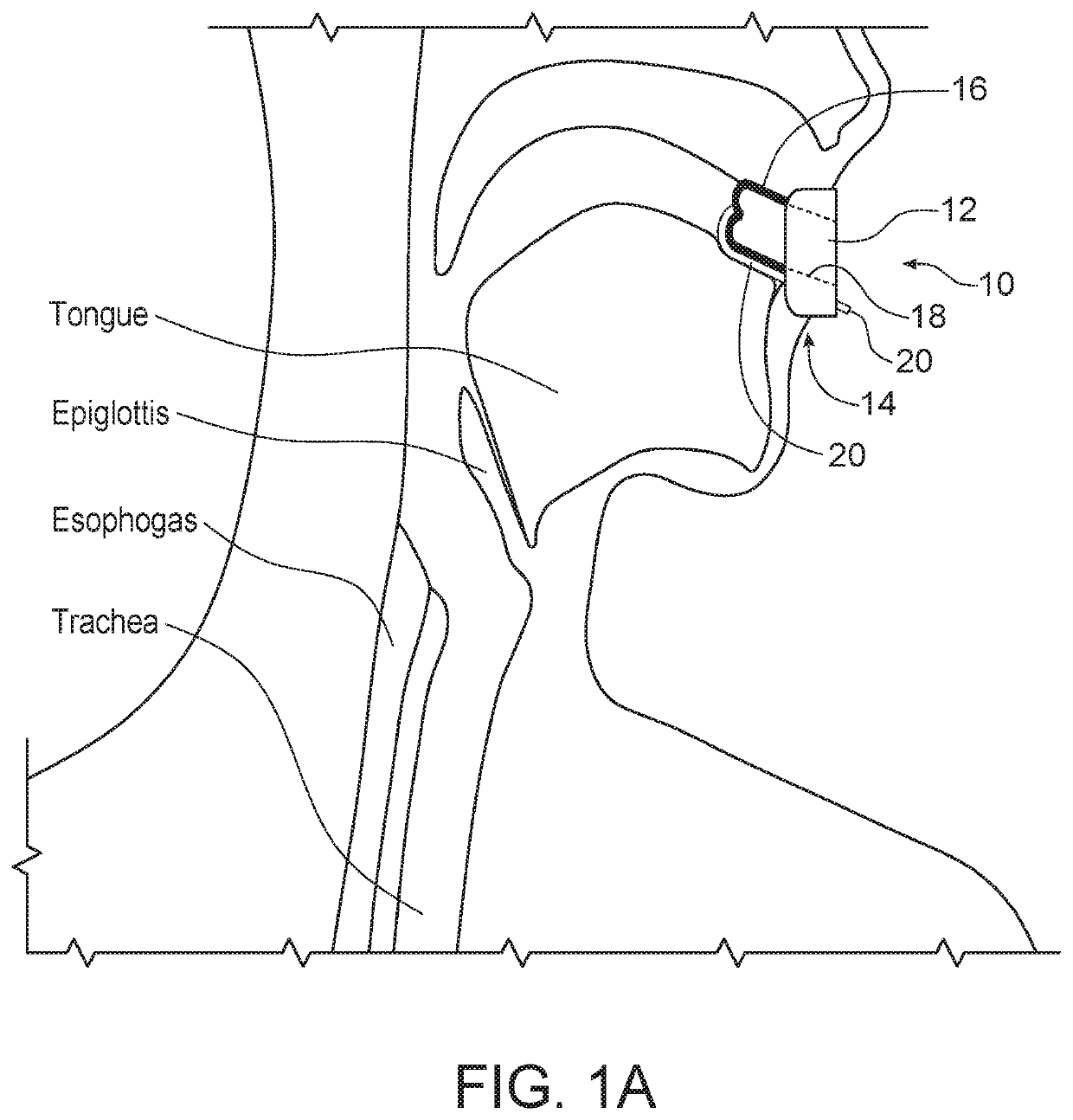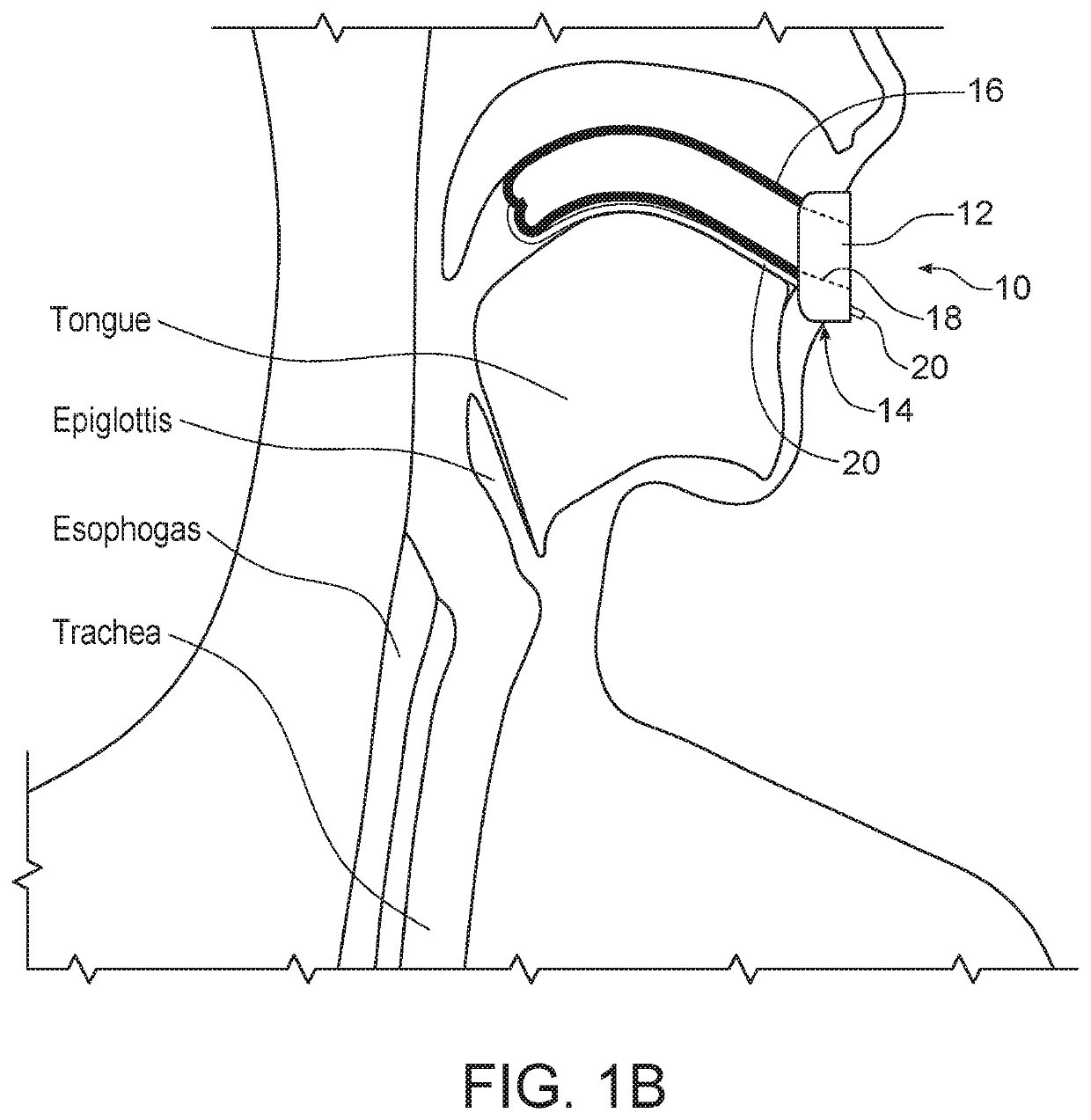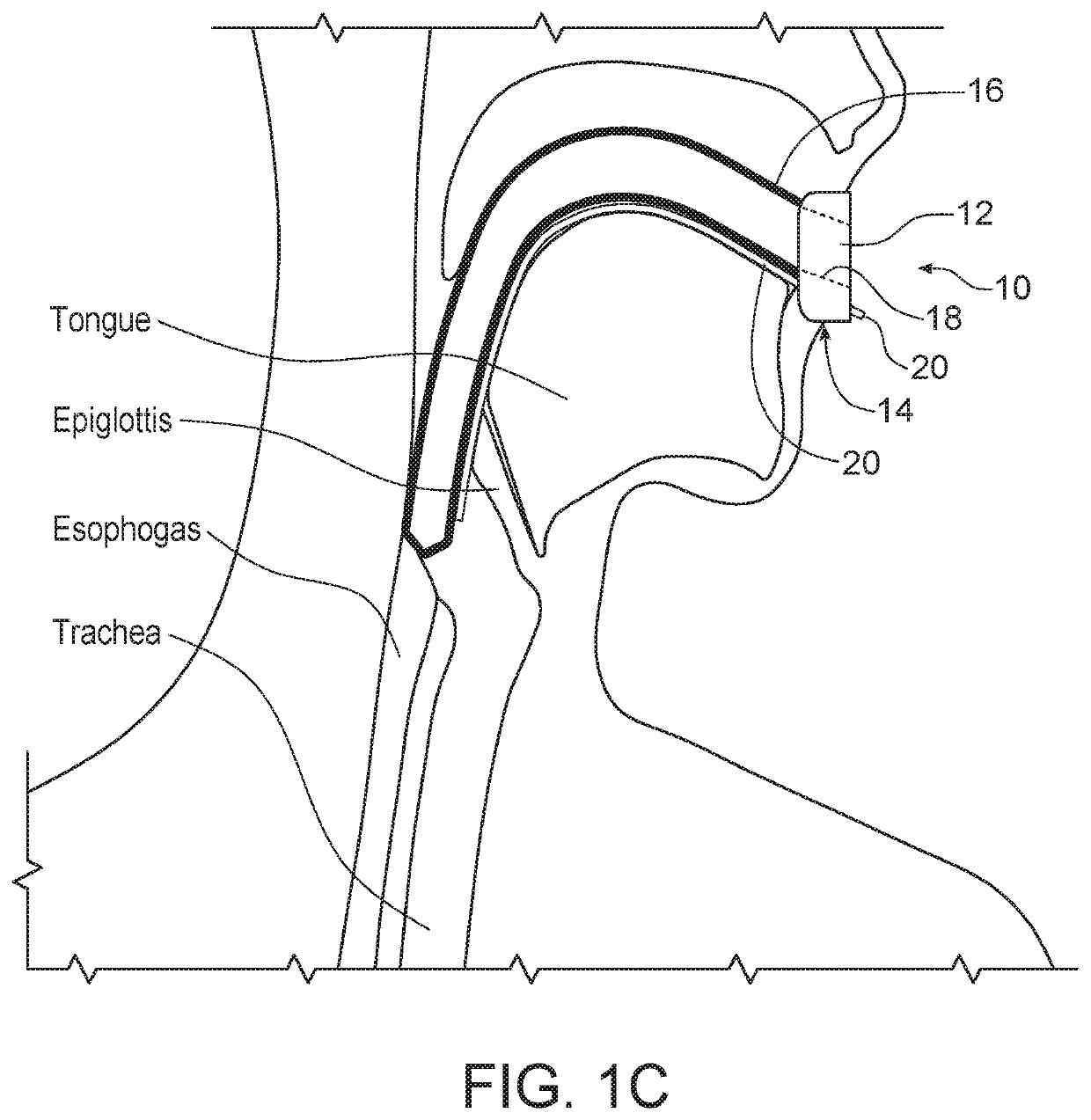Vine robot tracheal intubation device
a technology of intubation device and vine, which is applied in the direction of tracheal tube, medical devices, other medical devices, etc., can solve the problem of prohibitive cost and extensive training required
- Summary
- Abstract
- Description
- Claims
- Application Information
AI Technical Summary
Benefits of technology
Problems solved by technology
Method used
Image
Examples
Embodiment Construction
[0015]A preferred embodiment vine robot intubation device includes, and preferably consists of, a main eversion body, an intubation body, and a mouthpiece with a an access port to permit fluid / pressure transfer into the bodies from a regulated pressure reservoir. The main eversion body grows down the throat when inflated and carries the intubation body past the tongue and epiglottis. After primary inflation, the intubation body is inflated to grown into the trachea beyond the epiglottis. This body can act as a pathway through which a semi-rigid breathing tube can be passed to commence artificial breathing. The total length can be predetermined to match different physiology, e.g., by patient size, age, or measured physical characteristics. Preferred embodiments are inexpensive and disposable, avoiding problems regarding cleaning and reuse, which lead to hospital acquired infections and other problems.
[0016]Preferred embodiments of the invention will now be discussed with respect to t...
PUM
 Login to View More
Login to View More Abstract
Description
Claims
Application Information
 Login to View More
Login to View More - Generate Ideas
- Intellectual Property
- Life Sciences
- Materials
- Tech Scout
- Unparalleled Data Quality
- Higher Quality Content
- 60% Fewer Hallucinations
Browse by: Latest US Patents, China's latest patents, Technical Efficacy Thesaurus, Application Domain, Technology Topic, Popular Technical Reports.
© 2025 PatSnap. All rights reserved.Legal|Privacy policy|Modern Slavery Act Transparency Statement|Sitemap|About US| Contact US: help@patsnap.com



